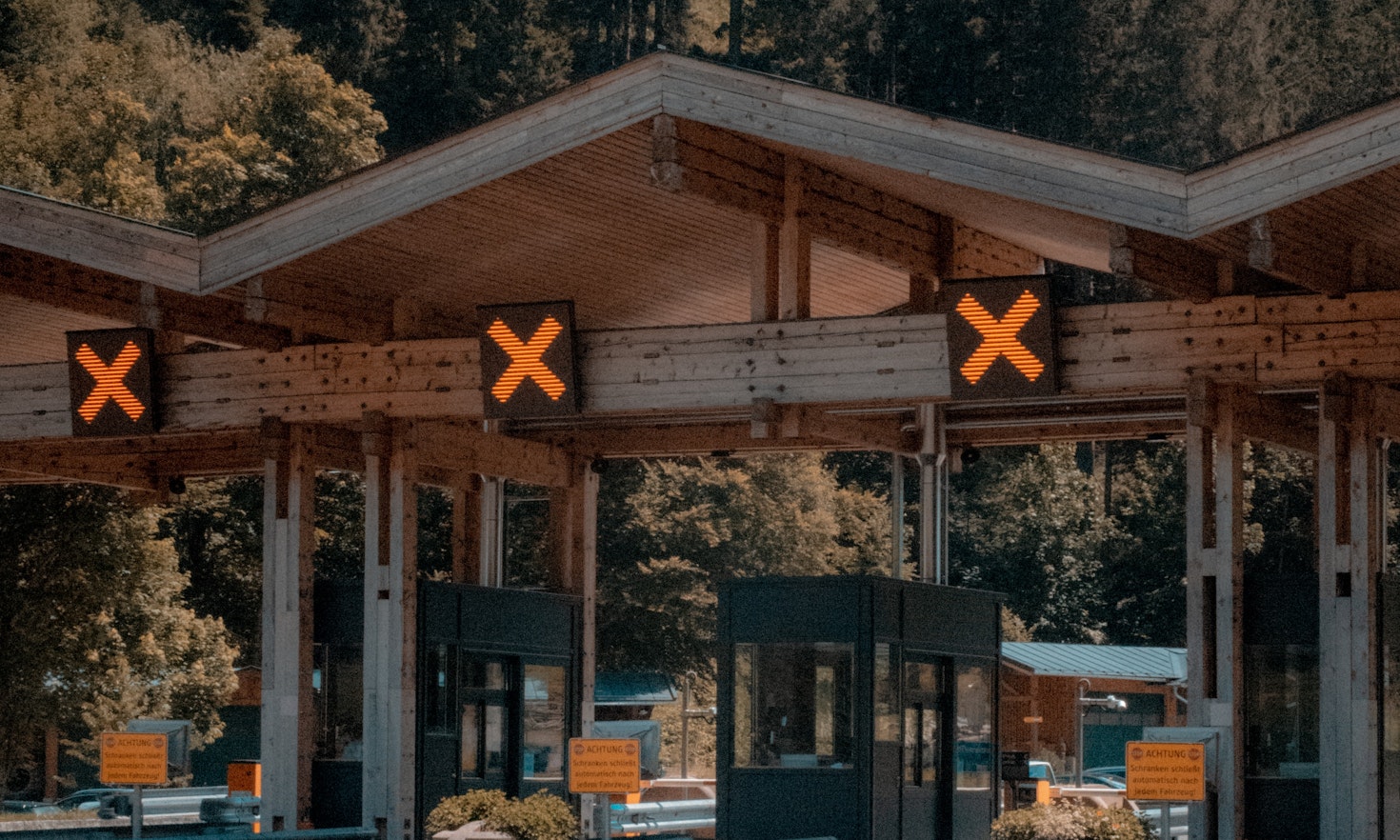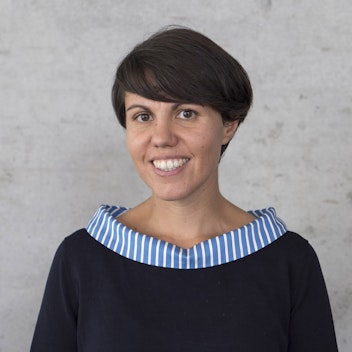Closing borders is supposed to create a sense of security for those within. (…) ‘protecting’ borders also suggests that there is something to be protected from.

Following the Czech example, Austria introduced strict border controls on the Austro-Slovak borders on September 30 to prevent human trafficking, as announced by the Austrian minister of Interior. Initially for ten days, police will now stop cars, vans and trucks at the border and will intensify controls in the immediate proximity of the border. Verena Wisthaler spoke with Dr. Judith Kohlenberger, expert on refugees and migration, on the efficiency of such measures.
Verena Wisthaler: How would you describe the situation at the Austrian borders with Slovakia, but also with Hungary and Slovenia?
Judith Kohlenberger: I would characterize the current mobility patterns we see at the Austrian borders as “mixed migration”. Among the people seeking to cross the border are Afghans and Syrians fleeing from (civil) war, persecution and the repressive regimes in their respective countries. Many of them will be granted asylum in Europe. Since the early summer, we also see more people from India and Tunisia making their way from Serbia -- which they can enter legally without a visa -- through neighboring countries and, thus, also through Austria. I say “through”, because the majority does not want to stay and apply for asylum here, but travel further to Germany, Spain or Portugal to work as seasonal laborers, presumably in low and lowest-paid sectors. Many of them will be unregistered and are hence particularly vulnerable to labor exploitation and human trafficking. So for them, Austria is mainly a transit country – until they are picked up by Austrian police due to heightened border controls.
To avoid immediate deportation, they have few options other than applying for asylum, which allows them to stay until an asylum decision is reached.
Judith Kohlenberger
This, however, is something they are rarely interested in. Most of them travel on and leave Austria within several days. They want to work and earn money, not claim asylum. Finally, the Russian war of aggression in Ukraine as well as high prices and inflation leading to economic plight in the Global South, also adds to the increase of mixed migration flows.
Strict border controls are often aimed at the prevention of human trafficking or the reduction of irregular migration. Already in 2015/2016, Austria took a very strict position towards refugees and asylum seekers, announcing the closure of the Austrian-Italian border at the Brenner-Pass. How efficient is such a measure?
Empirical evidence shows that when introducing border controls or other forms of migration control such as a more restrictive visa policy, one has to be aware of unintended substitution effects that can occur. These include spatial substitution, which means that migrants divert to other routes, other borders of the same country, or other countries altogether. Another effect is inter-temporal substitution, which often results in “now or never” surges in migration. Migrants adjust the timing of migration in expectation of a future tightening of policies, typically migrating much sooner than they would have intended or planned for. Think of your local shopping street on the eve of a COVID lockdown. Further effects of introducing a more restrictive border and immigration regime can be described as categorical, so a reorientation toward other legal or illegal immigration channels. And finally, if entry to a country becomes increasingly difficult, return migration decreases substantially, since people are encouraged to stay. Too much would be on the line if they left and perhaps tried to re-enter again at a later point, when it may have become impossible to do so. What we also know is that somewhat paradoxically, heighted border control can lead to more, not less smuggling. When borders become more difficult to penetrate, migrants need the help of “professionals” to do so. Border controls overall make irregular migration more dangerous, as people have to resort to even more difficult routes, longer distances or indeed desperate measures to circumvent controls. And it becomes more expensive, as smugglers raise their prices to adjust to the higher risk of getting caught. I assume that the intended audience of border closures are not just potential migrants, but also the resident population in Austria. Closing borders is supposed to create a sense of security for those within. Paradoxically, the opposite may often be the case, as “protecting” borders also suggests that there is something they need to be protected from – a diffuse threat from the outside.
In 2015/2016 Austria was among the Visegrad states, advocating for stricter asylum policies in the EU. How does Austria, together with the Czech Republic, influence migration governance in the EU?
The border regime is a very sensitive EU-policy area, indeed one that lies at the very heart of what the EU stands for: free movement within the Schengen area. From a European rights point of view, it is troublesome to witness how easily borders are closed in this day and age, in particular since current asylum numbers do not warrant it at all. This is far from the kind of large-scale exodus we saw in 2015, since only a minor share of arrivals intend to stay in Austria. People are, in fact, responding to labor shortages in Western European countries, mostly in agriculture. They are needed as cheap labor to support European economics and industries. But receiving countries are lacking, or indeed refusing to provide, appropriate immigration instruments, such as less restrictive visa policies and easy-to-access application systems to legalize these newcomers. What we saw in the last couple of days was a kind of ripple effect, with one country -- the Czech Republic -- starting to close borders to the East, and Austria following suit.
Notably, it is only the Eastern borders that these countries control – towards the west, we witness almost the opposite policy, namely letting people freely leave the territory. This policy of “waving through” is more or less openly confirmed. When asked about asylum seekers in transit, the Austrian Interior Minister simply quipped: “Do not keep travelers from travelling.”
Judith Kohlenberger
At the same, Finland closed it borders to Russian deserters, who are thus prohibited from the legal right to claim asylum. All of these are worrisome developments in a time when conflict and displacement are on the rise and more and more people will have to seek refuge elsewhere – be it because of persecution, famine or the devastating effects of climate change.
Yet, in relation to people fleeing the war in Ukraine, Austria shows itself very generous and welcoming. Why?
The key difference in our treatment of Ukrainian refugees versus those from, say, Syria and Afghanistan, was in fact not (only) the activation of the temporary protection regime, but can be traced back to long before the war. The EU–Ukraine Association Agreement signed in 2014 paved the way for a visa free travel regime for citizens of Ukraine. This – and not the temporary protection regime – was the foundation for their legal arrival in 2022.
Having legal, safe options to flee is crucial in a displacement context, since it reduces the element of self-selection among forced migrants. If fleeing to safety is only possible through dangerous and highly expensive channels, because it requires the help of smugglers to “illegally” enter European territory, only healthy people with financial resources will be able to do so. This almost precludes highly vulnerable groups, such as the elderly, people with chronic diseases or the poorest of the poor, from the get-go.
People arriving at the Slovak border now do not have the option of legal entry, although many Syrians and Afghans among them will be granted asylum in Austria once their procedure is finalized. This reflects that among the people arriving now, there is a considerate number with legitimate claims to asylum.
Introducing harsh border controls runs the risk of excluding people with legitimate claims and effectively robbing them of their right to asylum, leaving them vulnerable to persecution .
Judith Kohlenberger
Let’s not forget that push-backs are not restricted to the Balkans or the Mediterranean. In fall 2021, the Styrian Administrative Court ruled that illegal pushbacks happen “systematically” at the Austrian-Slovenian border.
What would you suggest to overcome this dilemma of creating hierarchies in the treatment of refugees?
Immigration options need to be diversified. Many citizens in the Global South have virtually no legal way of emigrating to Europa – despite a surging labor force demand in many states of the Global North. Hence, people people aspiring to migrate) are virtually “forced” into the humanitarian lane, i.e. into long asylum procedures with – in the case of labor migrants – negative decisions at their end. This is neither beneficial to the migrant nor the receiving country. Indeed, asylum is the most costly immigration option for receiving countries, since it entails a whole legal procedure under the principles of due process, sometimes going through all levels of jurisdiction. And yet, very few destination countries offer viable alternatives.
For people fleeing war and persecution, we need more legal options of seeking asylum in Europe, including a higher resettlement quota. Austria currently has a quota of zero refugees accepted through resettlement. This will not be tenable in the long run, as it just leads to the criminalization of refugees and fuels smuggling, human trafficking and exploitation. There is no need for smugglers if people are given safe and cost-neutral ways to flee.
About the Interviewed
Judith Kohlenberger is a migration scholar at the Vienna University of Economics and Business (WU), Institute for Social Policy. Her research focuses on forced migration and dimensions of integration, including health, education and gender. Her newest book, Das Fluchtparadox (2022, Kremayr & Scheriau), analyzes the many contradictions in narratives and policy on forced migration and displacement.
Website: https://www.wu.ac.at/en/sozialpolitik/team/social-policy/judith-kohlenberger/
Twitter: @J_Kohlenberger

Tags
Citation
This content is licensed under a Creative Commons Attribution 4.0 International license except for third-party materials or where otherwise noted.

Ethnic and linguistic identity in Ukraine? It’s complicated
 Sergiu Constantin
Sergiu Constantin
Migrazioni, agricoltura e sviluppo rurale
 Marzia Bona
Marzia Bona
Re-thinking Political Secularism: The Multiculturalist Challenge
 Katherine Arena
Katherine Arena